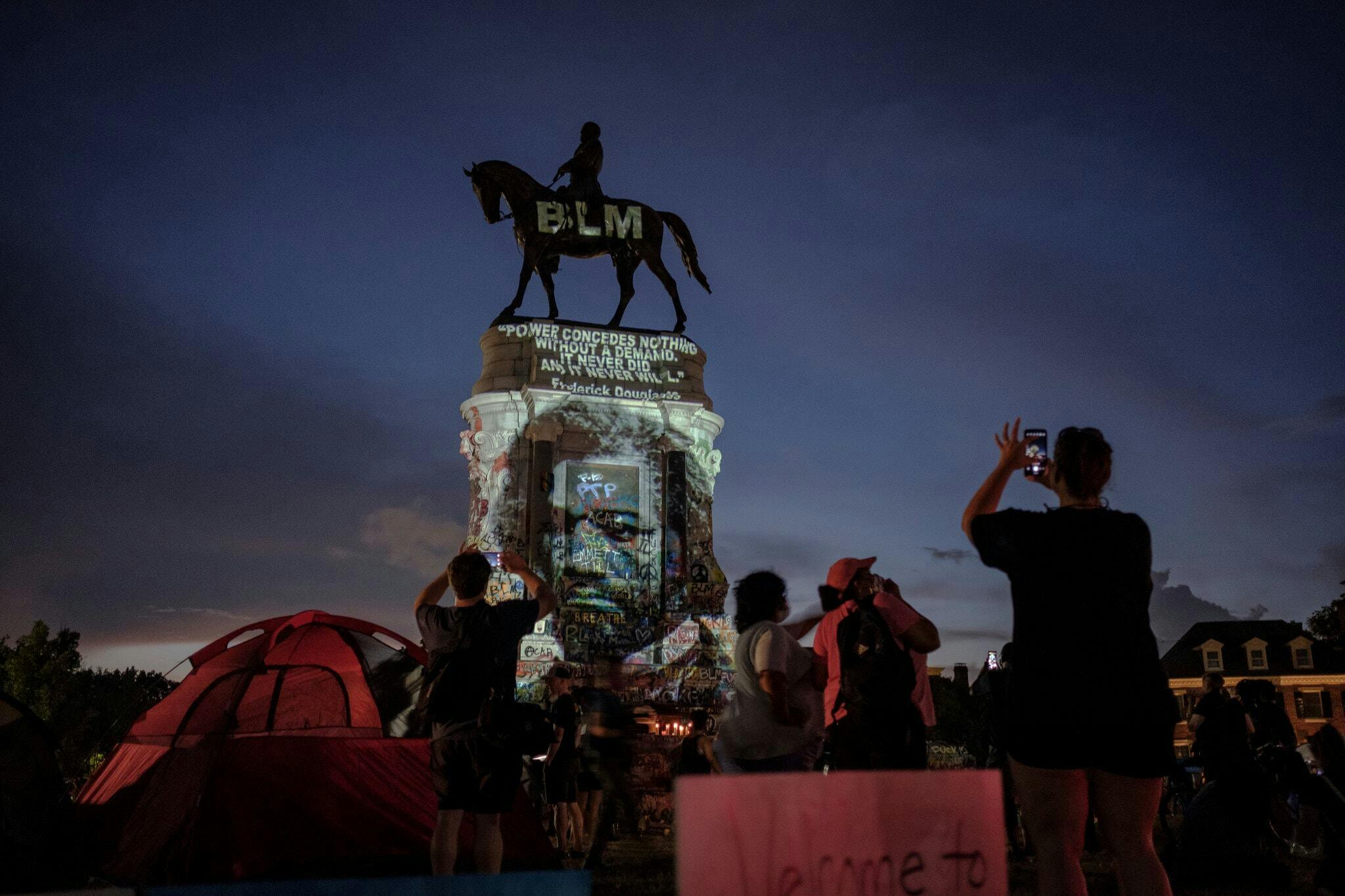Tearing down statues is the best history lesson

People in Bristol had petitioned their city council for decades to take down the city’s statue of slave trafficker Edward Colston. In early June, the world watched it being torn down and pushed into a river by protesters. Mass protests around the world have pushed back against reactionary historical narratives, and that push back is represented by attacks on monuments to racist figures of the ruling class.
Different shades of the right have come out in defence of public tributes to mass murderers, colonialists, slavedrivers and Confederate generals. Armed far-right militias have defended statues in the US, as have the far right in the UK (joined in sentiment by prime minister Boris Johnson). During a protest in Australia, police encircled a statue of captain Cook, and NSW premier Gladys Berejiklian pushed for harsher punishments for those charged with vandalising Cook’s effigies.
Right wing culture warriors have expressed shock at what they call an erasing of history. Sky News host Rita Panahi, writing in the Herald Sun, compared protesters tearing down statues to the Islamic State in an attempt to portray the phenomenon as a wave of cultural Marxism, leftist terrorism and thought control. “This cultural revisionism is dangerous and deeply idiotic”, Panahi wrote. “It seeks to erase history rather than learn from it.”
But statue-toppling doesn’t erase history. These statues were erected to pursue right wing political agendas; targeting them brings their history to light.
The statue of Colston in Bristol, for example, was erected 170 years after his death. It was part of a concerted effort by Bristol’s elites to beat back rising class struggle in the city in 1895. Colston’s statue plaque did not mention the 84,000 people he enslaved, as he was chosen for his “philanthropic” record, professor Madge Dresser told the Guardian: “There was a growing threat from organised labour and unskilled labour so they really wanted to rally people around a Bristol figure rather than on class lines”.
In the US, most of the statues of Confederate war heroes were set up as part of the wave of reaction that set back the gains of Blacks in the aftermath of the US Civil War. They belong to the Jim Crow establishment. A recent article in the Washington Post noted:
“Most of the Confederate statues that dot the Southern landscape were erected, however, not in the immediate aftermath of the Civil War, but half a century later ... the groups that paid for the monuments sought to send a message at a time when they were pushing for – and winning – Jim Crow laws to codify racial segregation.”
By toppling these statues, protesters educate the world, not just about the Civil War, but also about its aftermath. That’s when the racist southern ruling class remained in place and erected statues symbolising its commitment to oppressing Black people. As of 10 June, while the list of statue-topplings grew, more than 700 Confederate statues still remained across the US south.
In Australia, efforts to make us identify with Captain Cook are in fact efforts to reinforce a particular version of history – one that has always erased the reality of Indigenous community, culture and struggle, as well as Australia’s class divisions.
The struggles that have torn down those statues have not erased history but have educated millions about the reality of our society and the history of capitalism.
We should be glad to see those symbols thrown out of the public square by the force of a mass movement. But the history lesson provided by this struggle shows the depth of the issue. We can take down statues and reduce the amount of overt racism in the cultural sector, but neither adds up to a structural victory against racism and reaction.
Whether statues are retired to riverbeds or museums, we will still face the system that erected them in the first place. Capitalism will never face a shortage of racist politicians, corporations or media barons. It will always have another genocide up its sleeve, and another mass murderer to crown.
It’s beautiful to see shrines of reaction that have stood for a century or two torn down. It signals that the system they represent is under siege from below. We should tear down all of them, but make sure that system is torn down too.